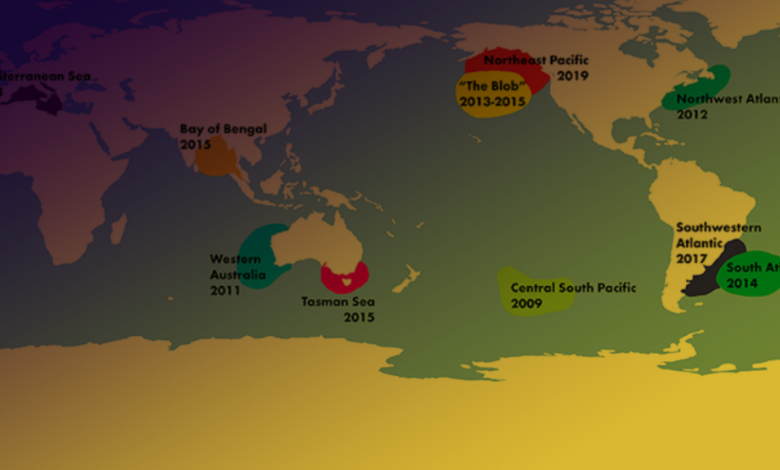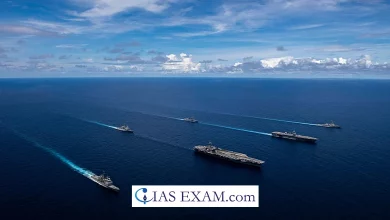Significance and Impacts of Marine Heatwaves

[GS Paper 3 – Environment Degradation, Global Warming]
Context – Recent studies conducted by various agencies show that the super-cyclone Amphan that hit the Eastern India in May 2020 would have been triggered by Marine Heatwaves.
The study has found the presence of a strong MHW beneath the track of the cyclone with an extremely high anomalous sea surface temperature of more than 2.5°C. This coincided with the cyclone track and facilitated its rapid intensification in a short period.
What are Marine Heatwaves?
- Heatwaves can also occur in the ocean and these are known as marine heatwaves, or MHWs. These marine heatwaves, when ocean temperatures are extremely warm for an extended period of time can have significant impacts on marine ecosystems and industries.
- Such Heatwaves can happen in summer and also in winter, where they are known as “winter warm-spells’ ‘.
- These winter events can have important impacts, such as in the southeast of Australia where the spiny sea urchin can only colonize further south when winter temperatures are above 12 °C.
Causes Behind MHWs
- Marine heatwaves can be caused by a whole range of factors, and not all factors are important for each event.
- The most common drivers of marine heatwaves include ocean currents which can build up areas of warm water and air-sea heat flux, or warming through the ocean surface from the atmosphere.
- Winds can enhance or suppress the warming in a marine heatwave, and climate modes like El Niño can change the likelihood of events occurring in certain regions.
- MHWs can be caused due to large-scale drivers of the Earth’s climate like the El Niño Southern Oscillation (ENSO).
Impacts of the MHWs
- Marine heatwaves affect ecosystem structure, by supporting certain species and suppressing others. For example, after the 2011 marine heatwave in Western Australia, the fish communities had a much more “tropical” nature than previously and switched from kelp forests to seaweed turfs.
- Marine heatwaves can cause economic losses through impacts on fisheries and aquaculture.
- Temperature-sensitive species such as corals are especially vulnerable to MHWs. In 2016, marine heatwaves across northern Australia led to severe bleaching of the Great Barrier Reef.
Measurement of Marine Heatwaves
- A marine heatwave occurs when seawater temperatures exceed a seasonally-varying threshold (usually the 90th percentile) for at least 5 consecutive days.
- Successive heatwaves with gaps of 2 days or less are considered part of the same event.
- MHWs are increasing in frequency due to climate change. MHWs increased by 54 per cent in the last 30 years.
- MHW has severe socio-economic consequences such as fish mortality, and coral bleaching, and also has the potential to interact and modify other extreme events such as tropical cyclones.
Way Forward
Marine heatwaves clearly have the potential to devastate marine ecosystems and cause economic losses in fisheries, aquaculture, and ecotourism industries. However, their effects are often hidden from view under the waves until it is too late.
By raising general awareness of these phenomena, and by improving our scientific understanding of their physical properties and ecological impacts, we can better predict future conditions and protect vulnerable marine habitats and resources.





.png)



